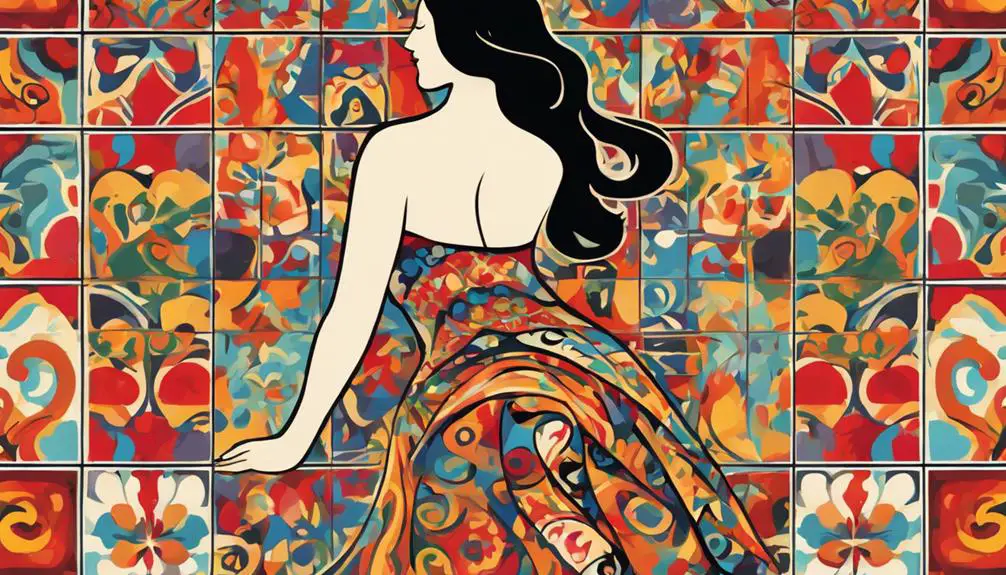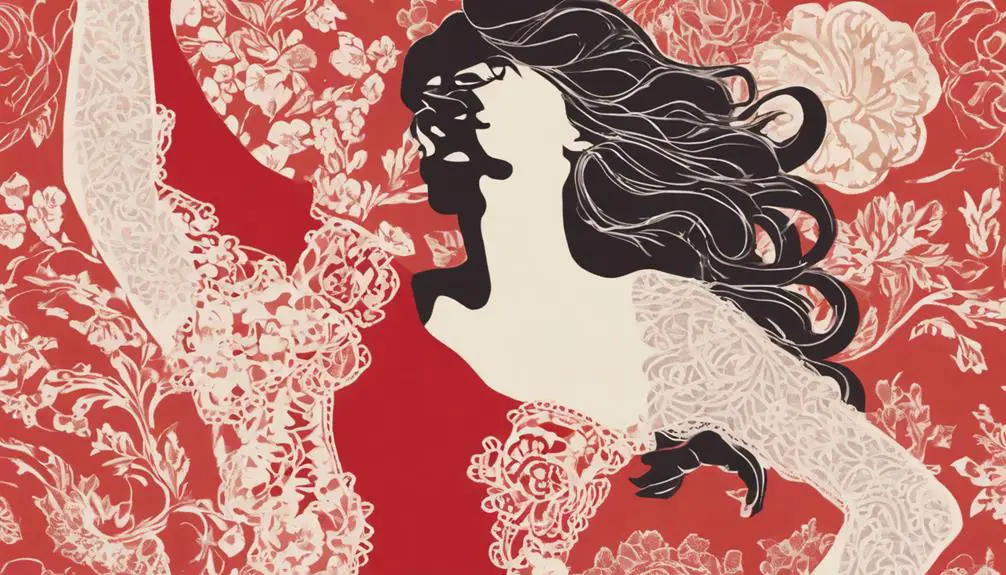When you hear "culo" in Spanish slang, you're likely to think of more than just a body part. In Latin American culture, "culo" embodies a complex phenomenon that represents sensuality, femininity, and social status. It's a symbol of beauty, freedom, and empowerment, deeply rooted in the region's history and cultural heritage. From reggaeton's celebration of femininity to the cultural significance of a curvaceous derrière, "culo" is more than just a word – it's an cultural icon. As you explore the intricacies of "culo" culture, you'll uncover a rich tapestry of identity, power, and cultural expression. There's more to discover beyond the surface.
Culo Culture: A Brief History

Since the 16th century, Spanish speakers have been exploring the term 'culo' to refer to the buttocks, but it wasn't until the 20th century that this anatomical feature became a cultural phenomenon in its own right.
You might be wondering, what sparked this shift? To understand the cultural roots of 'culo culture,' you need to examine the historical significance of the term.
In the 20th century, Latin American and Caribbean countries began to assert their cultural identities, and the 'culo' became a symbol of pride and sensuality.
This cultural movement was fueled by the rise of salsa and Afro-Latin music, which often celebrated the beauty of the female form. As a result, the 'culo' became an integral part of Latin American cultural expression, representing sensuality, freedom, and beauty.
Today, 'culo culture' continues to influence music, dance, and art, reflecting the complex and rich cultural heritage of Latin America.
As you explore the world of Spanish slang, understanding the cultural roots and historical significance of 'culo' will give you a deeper appreciation for the language and its cultural context.
Reggaeton's Obsession With Booty
In reggaeton, your favorite artists can't get enough of the booty, and it's not hard to see why: the genre's emphasis on sensuality, rhythm, and liberation has made the culo an integral part of its lyrical and visual landscape.
Reggaeton's obsession with booty is not just about objectification; it's about celebrating the beauty and power of the female form. The genre's rhythmic objectification of the booty is a key element of its sonic fetishization, where the culo becomes an instrument in its own right. This is evident in the way artists like J Balvin and Bad Bunny use the booty as a symbol of femininity and sensuality.
| Artist | Song | Booty-centric Lyrics |
|---|---|---|
| J Balvin | Ginza | "La chica que yo quiero tiene un culo así" |
| Bad Bunny | Diles | "Ella tiene un booty que es una cosa seria" |
| Rosalía | Aute Cuture | "Mi cuerpo es mío, mi culo es mío" |
Through their lyrics and visuals, reggaeton artists are redefining the way we think about the booty, moving beyond objectification and towards a more nuanced understanding of femininity and sexuality.
Femininity, Sexuality, and Power

As you explore yourself in reggaeton's booty-centric universe, you'll notice that the genre's fascination with the female form isn't just about aesthetics, but about tapping into a deeper sense of femininity, sexuality, and power. This fascination is rooted in the complex interplay between gender roles and sensual empowerment.
Reggaeton's female artists, in particular, have used their music as a means of reclaiming and rewriting traditional gender roles. They're not just objects of desire, but subjects who assert their agency and autonomy.
Through their lyrics and performances, they embody a sense of sensual empowerment, celebrating their bodies and desires. This empowerment isn't just about sexual liberation, but about challenging patriarchal norms that have historically silenced and objectified women.
The Body Ideal in Latin America
You enter a world where the body ideal in Latin America is shaped by a complex interplay of cultural, historical, and socioeconomic factors that influence beauty standards and perceptions of femininity. Within this framework, the notion of beauty is deeply rooted in cultural heritage, with a strong emphasis on curvaceous figures, particularly in countries like Brazil, Argentina, and Colombia.
| Country | Beauty Standard | Fitness Obsession |
|---|---|---|
| Brazil | Curvy, voluptuous figures | High, with emphasis on beach bodies |
| Argentina | Slender, fit physiques | Moderate, with focus on elegance |
| Colombia | Hour-glass figures, emphasis on buttocks | High, with focus on fitness for beauty |
In Latin America, beauty standards often prioritize a more curvaceous figure, with a focus on hips, buttocks, and breasts. This is reflected in the popularity of plastic surgery, particularly in Brazil, where butt lifts and breast augmentations are common. The fitness obsession is also prevalent, with many gyms and fitness centers catering to the demand for toned, athletic physiques. As you navigate this complex landscape, you begin to understand the intricate web of cultural, historical, and socioeconomic factors that shape the body ideal in Latin America.
Culo as a Status Symbol

Your attention turns to the coveted culo, a symbol of status and sensuality in Latin American culture, where a curvaceous derrière is revered as a hallmark of beauty, femininity, and even social standing.
You begin to explore that having a shapely culo isn't just a physical attribute, but a social currency that can open doors to social mobility. In this cultural context, a woman's cuerpo is seen as a reflection of her economic status, with a curvy figure signifying a luxury lifestyle. The more voluptuous the culo, the higher the social standing.
You realize that this cultural phenomenon is deeply rooted in the region's history, where a woman's body was often seen as a symbol of fertility, abundance, and prosperity. As you investigate further, you start to see how this cultural ideal has been perpetuated through media representation, beauty standards, and even language, where words like 'culo' and 'cuotas' are used to describe a woman's body.
Slang, Identity, and Cultural Heritage
Delving into the vibrant world of Spanish slang, you're struck by the way colloquial expressions like 'tener culo' or 'estar cuota' not only reflect cultural heritage but also shape identity, self-perception, and social relationships.
As you navigate the complex landscape of Spanish slang, you realize that language barriers can both unite and divide communities. On one hand, shared slang expressions can create a sense of belonging and cultural affinity among speakers. On the other hand, language barriers can exclude those who don't speak the language, perpetuating cultural appropriation and erasure.
As you explore the intricate relationship between slang and identity, you begin to appreciate the cultural heritage embedded in these expressions. You see how they reflect the historical and social contexts in which they emerged. For instance, 'tener culo' isn't just a phrase; it's a symbol of resistance, empowerment, and self-expression.
Booty in Latin American Media

As you explore Latin American media, you'll notice that the portrayal of booty, or 'culo,' reflects a complex interplay between cultural pride, sexual objectification, and racial stereotypes, often perpetuating a narrow and problematic beauty standard. In telenovelas, for instance, curvaceous women are often cast as seductresses or love interests, reinforcing harmful media stereotypes. These representations not only objectify women's bodies but also perpetuate Eurocentric beauty standards, marginalizing Afro-Latinx and Indigenous women.
You'll also notice that media outlets frequently fetishize the 'culo,' reducing women to their physical attributes. This reinforces a culture of machismo, where men are encouraged to objectify and dominate women's bodies. Additionally, the emphasis on booty in Latin American media perpetuates a narrow and problematic beauty standard, where only certain body types are considered desirable.
As a result, many women feel pressure to conform to these unrealistic beauty standards, leading to body dissatisfaction and low self-esteem. By recognizing and challenging these harmful representations, you can work towards a more inclusive and empowering media landscape that values diversity and promotes body positivity.
Unpacking the Culo Complex
By examining the cultural significance of the 'culo' in Latin American society, you'll unravel a complex web of racial, gender, and class dynamics that perpetuate a beauty standard rooted in colonialism and patriarchy. This complex, which we'll call the 'culo complex,' is deeply ingrained in the cultural psyche, influencing how people perceive and interact with their own bodies.
You'll notice that the 'culo complex' is closely tied to cultural shame, particularly for women and non-binary individuals. The pressure to conform to Eurocentric beauty standards can lead to self-doubt, low self-esteem, and a distorted body image. This cultural shame is deeply internalized, making it difficult for individuals to reclaim their body autonomy.
However, by recognizing and challenging these oppressive structures, you can begin to dismantle the 'culo complex' and foster a more inclusive, accepting environment. This involves creating spaces where individuals can embrace their unique beauty, free from the constraints of colonialism and patriarchy.
Frequently Asked Questions
Is the Emphasis on Booty in Spanish Slang a Form of Objectification?
As you explore the emphasis on physical attributes, you ponder whether it's important to examine if it's a form of objectification.
You realize that, historically, power dynamics have led to the reduction of women to their bodies, undermining female empowerment. Given this situation, the focus on booty can be seen as perpetuating harmful attitudes.
However, it's crucial to ponder the agency and autonomy of individuals, particularly women, who reclaim and redefine their bodies as a symbol of strength and liberation.
How Does the Focus on Booty Impact Body Image in Latin America?
Imagine yourself walking through the vibrant streets of Rio de Janeiro, surrounded by stunning murals celebrating curvy women. But, as you explore further, you realize the emphasis on booty can be a double-edged sword.
In Latin America, the focus on booty can perpetuate unattainable beauty standards, leading to body dissatisfaction. Media representation plays an essential role, often promoting unrealistic beauty ideals. To combat this, body positivity movements are emerging, promoting self-acceptance and self-love.
You start to wonder, can we reclaim the booty narrative to celebrate diversity and self-acceptance?
Are There Regional Differences in Spanish Slang for Booty?
As you explore the complexities of Spanish slang, you'll discover that regional dialects play a significant role in shaping the language.
When it comes to referring to the booty, slang variations abound across different regions. You'll find that in some areas, 'culo' is the go-to term, while in others, 'nalgas' or 'glúteos' are preferred.
These regional differences in slang not only reflect local cultural nuances but also influence how people perceive and express themselves.
Is the Celebration of Booty in Spanish Slang Culturally Appropriate?
As you explore the complexities of language, you're right to wonder if celebrating certain slang terms is culturally appropriate.
It's imperative to take into account cultural sensitivity when embracing linguistic expressions. Language evolution is a natural process, but it's vital to acknowledge the power dynamics at play.
You must recognize the historical and social contexts that have shaped these terms, avoiding appropriation and cultural insensitivity.
Has the Popularity of Reggaeton Increased the Objectification of Women?
You might wonder if reggaeton's rise has led to the objectification of women. Research suggests that, indeed, the genre's popularity has perpetuated harmful gender stereotypes.
Music videos often feature female artists as mere props, reinforcing patriarchal norms. Latin feminist scholars argue that the lack of diverse media representation in the music industry contributes to this issue.
As you explore further, you'll find that the objectification of women is a systemic problem that requires a thorough, culturally sensitive approach to be addressed.
Conclusion
As you explore the world of Spanish slang, you're struck by the duality of 'culo' – a term that's both revered and objectified.
On one hand, it's a symbol of femininity, power, and cultural heritage; on the other, it's a status symbol that perpetuates unrealistic beauty standards.
You're left wondering: can the 'culo' ever truly be free from the constraints of societal expectations, or will it forever be bound by the complex web of Latin American culture?







